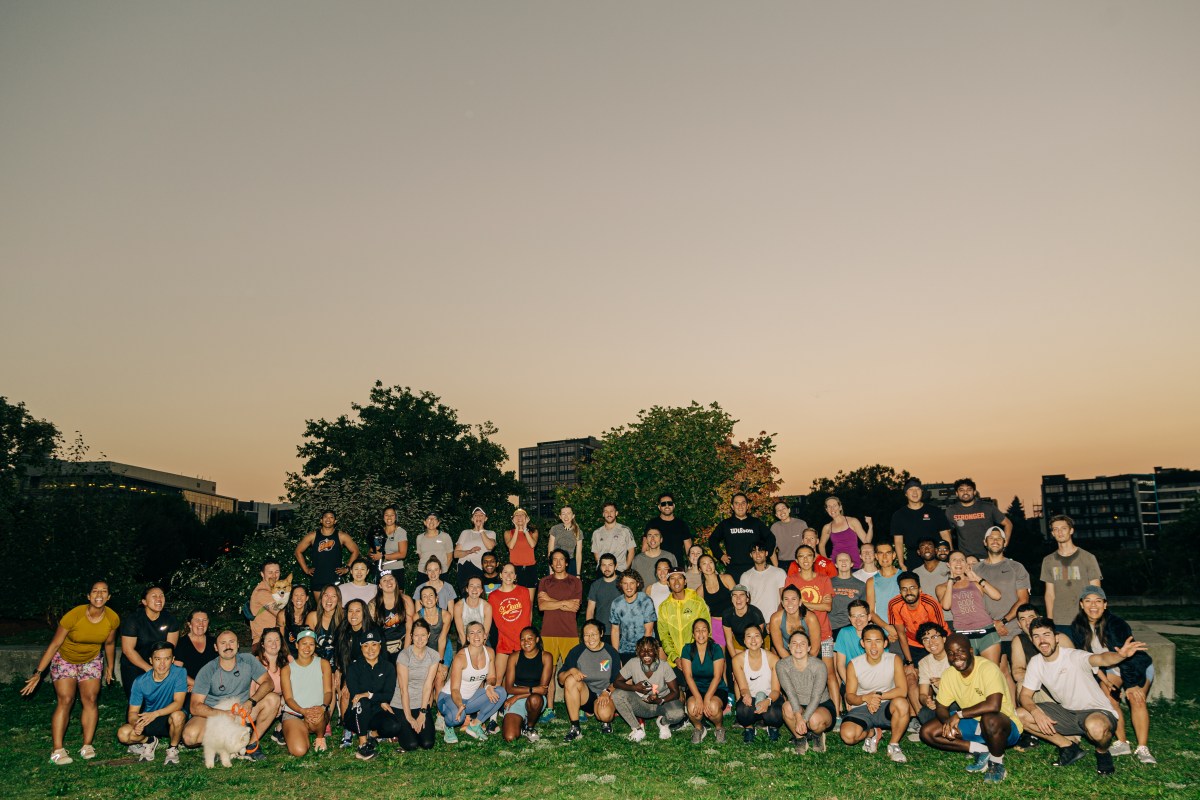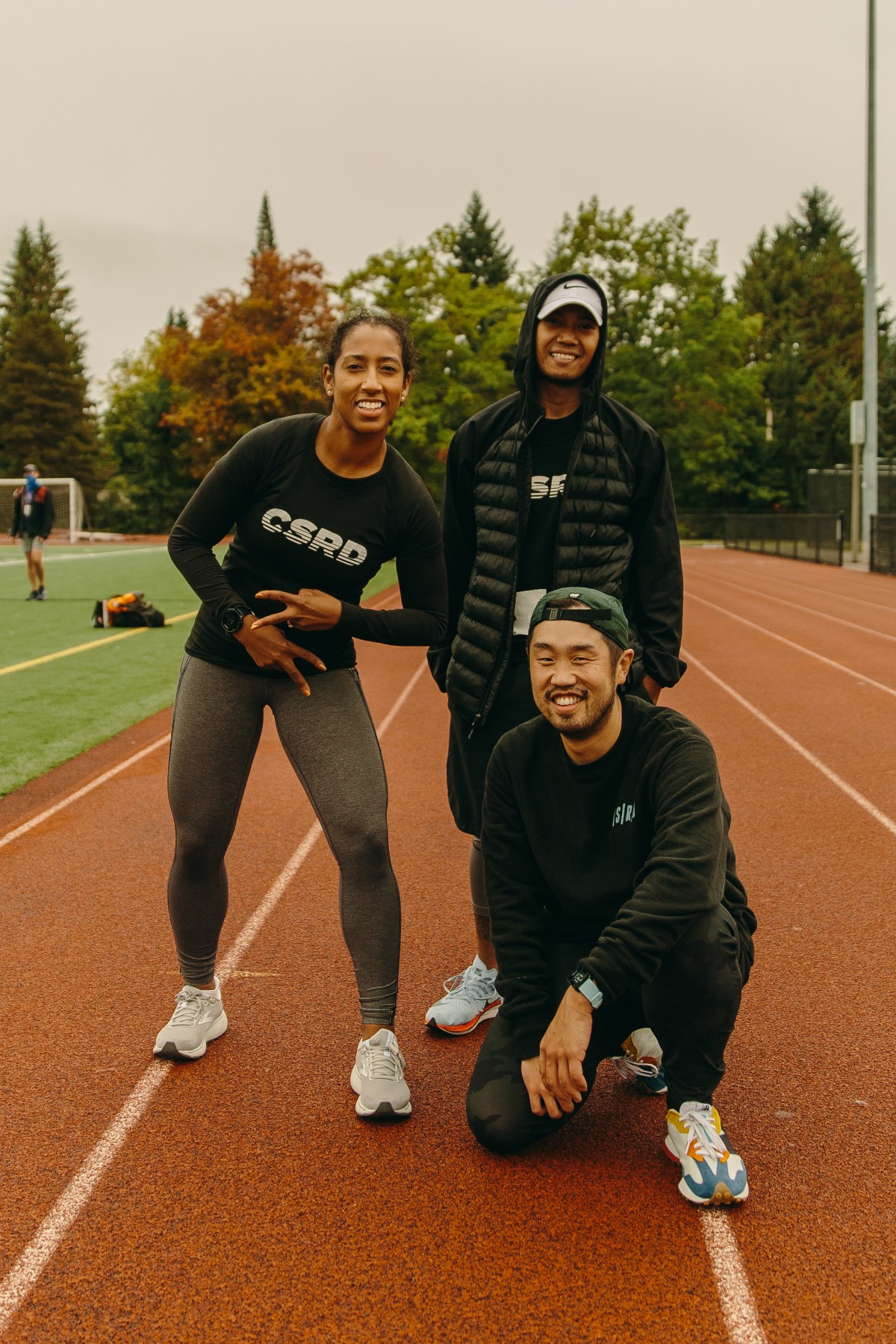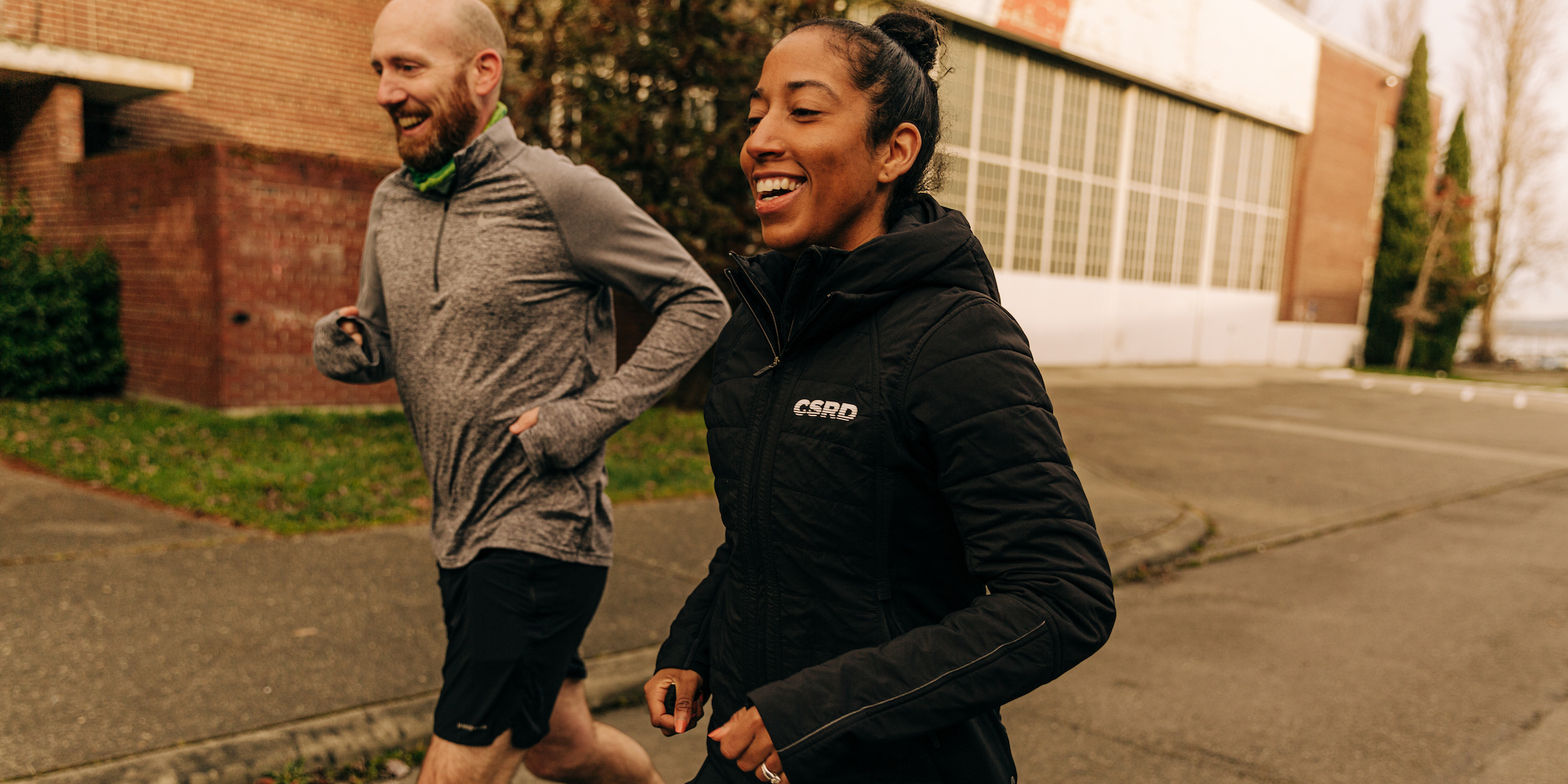On a Monday morning in February of 2017, Ashley Davies, Miran McCash and David Oh set out on a 3-mile run along the Seattle waterfront. The three had met in a local Nike running group the year before, and when the group ended, they missed the community and the connection it provided.
Davies, who has a day job in education focusing on racial equity at Seattle Public Schools, says the friends bonded over recognizing the importance of community in running. Originally from the East Coast, Davies had been a runner since high school, when she immediately showed talent in cross country. Still, as a Black woman, she’s often felt othered in the running world. She knows other runners with marginalized identities, including McCash and Oh, have felt the same.
“For the three of us, running is a part of the foundation of our lives, but, that said, it comes with the intersectionality of [our other identities]. I’m a Black woman, I’m always running in a female Black body,” she says. “We wanted to make a safe space for us to be who we are and create community—to use something we love as a vehicle to bring awareness.”
During that 3-mile run together, Davies, Oh and McCash realized they’d have to create the space they wanted themselves. They invited other former Nike group members and friends to join them for a run the next week at Seattle’s Lake Union.
Davies and her co-founders came up with a credo, “All faces, all paces,” to encapsulate who they were and what they wanted to be as founders of a run club; they’d all felt excluded in running, even though it was such a core part of their lives and identities. Davies quit running for a while in college because of the pressure of being on an all-white Division One track team, where she didn’t have anyone from a similar background to relate to. Because of experiences like that, it felt crucial for Davies, McCash and Oh to create an environment where people could look and identify any way—and run at any pace. “Community is the central part of it and the movement comes after,” Davies says.
People showed up and kept showing up week after week for chilly runs along the water. They even stuck around when the season changed. This new crew, Club Seattle Runners Division (CSRD), took off, and in a much bigger way than the founders expected. The group still meets every Monday at 6:30am, and Davies says that nearly six years later, they almost always have a new participant at each run.

Community is a tricky thing to build and keep going. Even though the group has flourished, the founders still think about how CSRD is structured, and if the way they organize events, attract new members and plan sessions is meaningful to current members and the other communities they’re part of. They do two group runs a week, because Davies says consistency is key in creating a space where people feel comfortable and safe. They’ve also expanded geographically and thematically, to host events like a yearly Pride run and a Black history run/walk last year in South Seattle, a traditionally multiethnic and multicultural neighborhood that’s facing the pressures of gentrification. “We’re really cognizant of calling [that event] a run/walk, because we want to attract people who don’t necessarily come to run,” Davies says. The co-founders’ goals are twofold: They’re pulling people into a safe and healthy space and using running as a tool to talk about community development and social justice. CSRD just hosted a mile and marathon training program with Black Men Run, to give people a starting point for running, and to talk about the health disparities that Black men face.
“We’re continuing to find ways to partner with people and really focus on BIPOC businesses and organizations,” Davies says. “We’re being mindful of who we’re supporting, and of different parts of the city.”
Davies and her co-founders are personally trying to open up that space by making the group much more than a running club that’s focused on training plans, race results and metrics. They all recognize that running—whether as a hobby, health practice, form of competition or meditation—doesn’t happen in isolation from our daily circumstances. They know that identity, class and race effect how and where we feel safe, who gets to move and who has access to outdoor environments. CSRD seeks to address the fears and challenges that come with that reality, but the group also aims to elevate joy of movement, and the importance of doing something good for our bodies.

Davies says that idea of a safe space, in running or in any kind of activity can be complicated, especially for women and people of color who can face real threats when they run. And safety doesn’t just mean wearing warm gear or glowing vests when it gets dark out. “Running is so much more than a pair of sneakers and time,” Davies says. “We’re focused on psychological safety, and there are so many elements of that.” She says CSRD leadership is trying to unpack and address all the aspects of how a member might feel safe when they’re moving their body outside, from how they look and feel in their running gear, to the running jargon they might not understand.
Davies says CSRD leaders focus on consistency, openness and checking in. She and her co-founders, who volunteer their time, try to model the safe and welcoming environment they want to see in a running group. “Every time you gather people you [can] have influence. Amongst our leadership group, we’re trying to be approachable and grow and evolve on what it means to be a safe, open place,” she says. They each have different strengths and skills. Oh, for instance, is a photographer; taking candid photos can draw people out and help get them excited, especially at events.
The CSRD founders had no idea what would happen on that chilly Monday in 2017, but from the start they decided they wanted one new participant at every group run. Six years on, they’ve met the goal every week. Davies says that’s proof to them that they’re filling a need, and each new face means their community is growing.
Read more on running and community by checking out our Let’s Run Together series.
